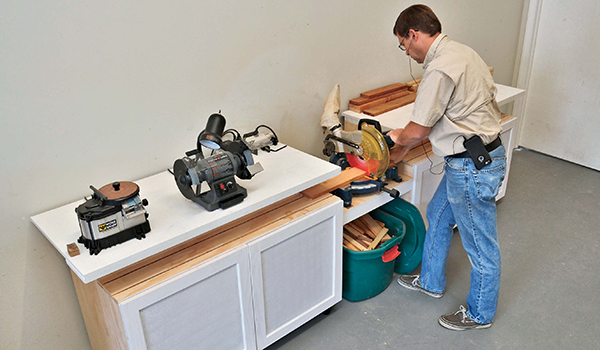
The questioner asked about the right height for a work bench. Some suggested making it a bit shorter than your table saw top so you could also use it as an outfeed table. Others suggested Neanderthals needed the surface much lower. Any ideas?
Rob Johnstone: As John English stated in his Woodworker’s Journal article, a general rule is: your workbench should be about half your height. (72″ tall = 36″ bench) The true answer is what works best for you. Try setting up work surfaces at different levels and see what is comfortable for you. There are some good books on the subjects that can help answer other questions you might have: Scott Landis’ The Workbench Book is my favorite.
Ian Kirby: The height of a table saw and the height of a work bench have nothing to do with one another. The bench height is determined by the type of work performed on it and by the height of the worker. Concern for the surface height alone takes no account of the thickness of the workpiece or the main operations that take place on the bench. There is no ‘right’ height.
Rick White: The standard height is 34″ tall, but you need to use that as the base line. If you’re seven feet tall, that isn’t going to work for you. Your best bet is determining how your going to use it most often (planing, assembly, veneering. etc.) and get one that’s comfortable for those tasks. I wouldn’t make it shorter just so it can double as an outfeed table. The sore back isn’t worth it.
Michael Dresdner: It really depends on what you are doing on the bench and how tall you are. The ideal spot for the surface you are working on is often just below the elbow. I have a bench in my shop that I use for guitar repair, and it is much higher than typical, but when a guitar is on it, the part I am working on is just about elbow height. On the other hand, I have another lower table that does mixing, assembly, and outfeed for my table saw. The bottom line is that the table should let you work without having to bend over (too low) or hunch up your shoulders (too high) to have the work comfortably at hand. I doubt that one surface will be ideal for all the jobs in your shop, and most shops have several.





